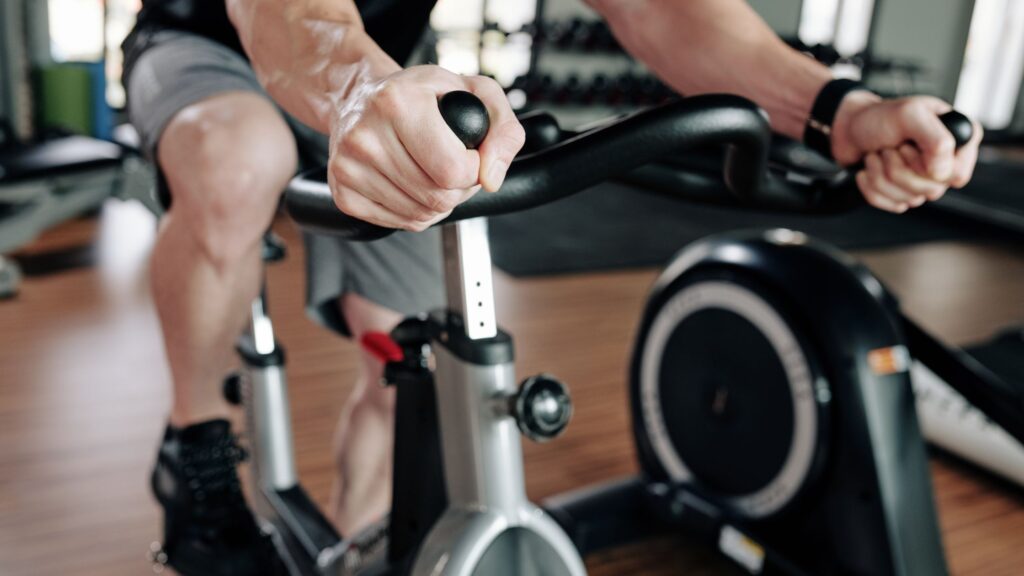Do Fitness Trackers Work on Stationary Bikes?
Introduction
Among individuals who use fitness trackers to monitor their physical activity levels, the question often arises: “Do fitness trackers work on stationary bikes?” Stationary bikes are popular exercise equipment, but there is uncertainty about whether Fitness Trackers Work can accurately track workouts on these bikes. This article explores the functionality of fitness trackers on stationary bikes, their tracking capabilities, and how users can optimize their usage for effective fitness monitoring.
Table of Contents
What This Post Covers
In this comprehensive guide, we will cover:
- How fitness trackers track activity.
- The challenges and considerations of using fitness trackers on stationary bikes.
- Strategies for optimizing fitness tracker accuracy on stationary bikes.
- The benefits of using fitness trackers for stationary bike workouts.
- Common misconceptions and troubleshooting tips.
How Do Fitness Trackers Track Activity?
Sensor Technology
Fitness trackers utilize sensor technology such as accelerometers and heart rate monitors to track physical activity. The accelerometer measures movement and intensity, while the heart rate monitor provides insights into exercise intensity and calorie expenditure.
Algorithms and Data Analysis
Advanced algorithms analyze data from sensors to categorize activities, estimate calorie burn, and track performance metrics. This data is then displayed on the fitness tracker’s interface or synced with a companion app for detailed analysis.

Do Fitness Trackers Work on Stationary Bikes?
Challenges
Fitness Trackers Work may face challenges when tracking activity on stationary bikes due to the lack of GPS data and limited movement compared to outdoor activities. The absence of GPS can affect distance and speed measurements, while the stationary nature of the bike can impact accelerometer readings.
Optimizing Accuracy
Users can optimize Fitness Trackers Work accuracy on stationary bikes by manually selecting the “Cycling” or “Indoor Cycling” activity mode on their device. This prompts the tracker to focus on specific metrics relevant to stationary bike workouts, such as heart rate and duration.
How Fitness Trackers Work on Stationary Bikes?
Fitness trackers utilize various sensors and algorithms to track activity, including heart rate, duration, and calorie burn, making them suitable for stationary bike workouts. However, challenges such as step counting discrepancies and accuracy in distance measurements may arise due to the stationary nature of the exercise.
Users can enhance tracker accuracy by manually selecting the appropriate activity mode, focusing on relevant metrics, and ensuring proper device placement. The benefits of using Fitness Trackers Work for stationary bike workouts, such as performance monitoring and goal setting, make them valuable tools for fitness enthusiasts seeking comprehensive workout tracking.
Benefits of Using Fitness Trackers for Stationary Bike Workouts
Performance Monitoring
Fitness trackers provide valuable insights into performance metrics during stationary bike workouts, including heart rate zones, calorie burn, and workout duration. This data helps users track progress and adjust intensity levels.
Goal Setting and Motivation
Setting goals on fitness trackers for stationary bike workouts motivates users to achieve targets, whether it’s a specific calorie burn, duration, or distance goal. Visualizing progress can boost motivation and adherence to workout routines.
Integration with Apps and Platforms
Many fitness trackers integrate with companion apps and platforms, allowing users to analyze workout data, set challenges, and share achievements with friends or fitness communities. This social aspect enhances motivation and accountability.
Common Misconceptions and Troubleshooting
Step Counting
Users may notice discrepancies in step counts during stationary bike workouts. Since stationary biking involves minimal foot movement, Fitness Trackers Work may not accurately count steps. Focus on metrics like heart rate and duration instead.
Calorie Burn Estimates
Fitness trackers estimate calorie burn based on activity intensity and user data. While they provide estimates, actual calorie expenditure may vary. Adjusting user settings and using heart rate data can improve accuracy.
Heart Rate Monitoring
Ensure proper placement and fit of the fitness tracker’s heart rate monitor for accurate readings during stationary bike workouts. Tighten the band to maintain contact with the skin and minimize interference.

Conclusion
In conclusion, fitness trackers can work on stationary bikes by accurately tracking metrics such as heart rate, duration, and calorie burn. While challenges like step counting discrepancies exist, optimizing fitness tracker settings and focusing on relevant metrics enhances accuracy. The benefits of using fitness trackers for stationary bike workouts, including performance monitoring, goal setting, and integration with apps, make them valuable tools for fitness enthusiasts.
Frequently Asked Questions
1. Can fitness trackers accurately measure distance on stationary bikes?
Fitness trackers may estimate distance based on movement and intensity during stationary bike workouts, but they may not be as accurate as GPS-enabled tracking for outdoor activities. Focus on other metrics like heart rate and duration for more reliable insights.
2. Do fitness trackers count steps during stationary biking?
Since stationary biking involves minimal foot movement, fitness trackers may not accurately count steps. Users should prioritize other metrics like heart rate and calorie burn for tracking workout intensity.
3. Can I sync stationary bike workouts from my fitness tracker to other platforms?
Yes, many fitness trackers allow users to sync workout data from stationary bike sessions to companion apps and platforms for analysis, goal setting, and sharing achievements with others.
4. How can I improve heart rate monitoring accuracy during stationary bike workouts?
Ensure the fitness tracker’s heart rate monitor is properly positioned and securely fastened for consistent contact with the skin. Adjust the band if needed to minimize interference and improve accuracy.
5. Are fitness trackers suitable for tracking high-intensity interval training (HIIT) on stationary bikes?
Yes, fitness trackers can track HIIT sessions on stationary bikes by monitoring heart rate, duration, and intensity levels. Users can manually adjust settings or select specific activity modes for HIIT workouts to ensure accurate tracking.

My name is Oje and I’m obsessed with finding the latest tech gear to help people track progress and solve problems more efficiently. I spend countless hours researching and testing innovative apps, wearables, and devices for fitness, health, productivity, and more.
